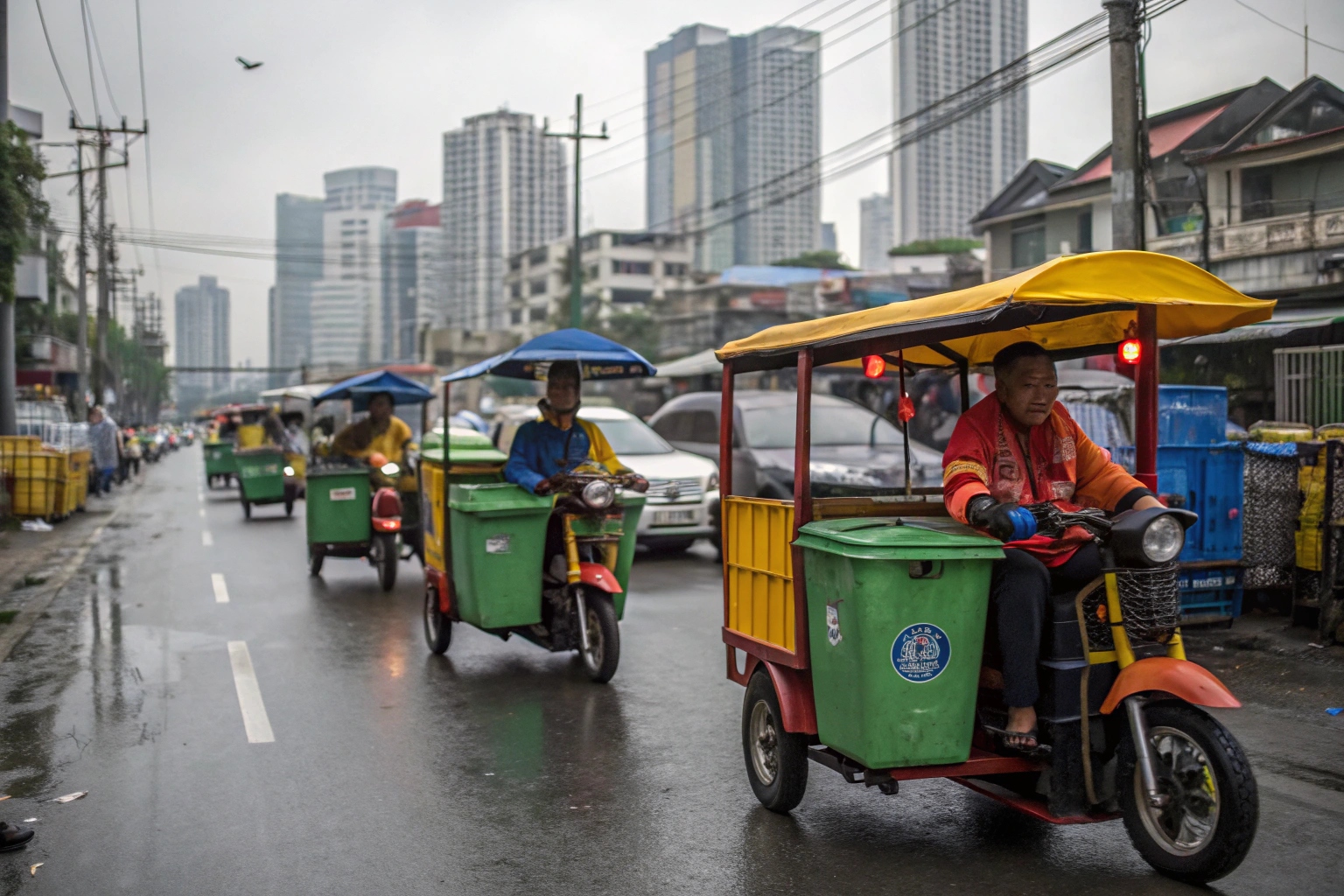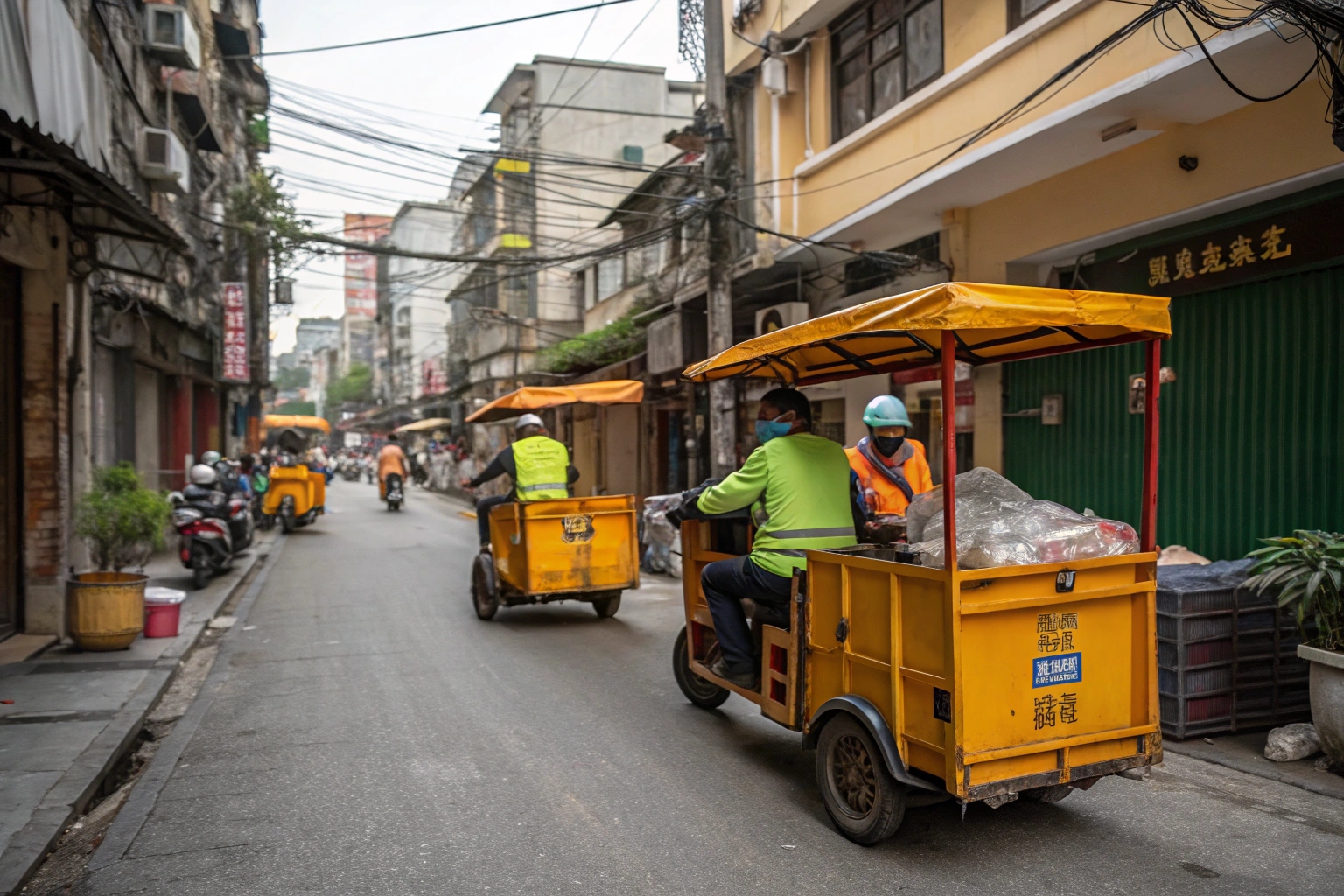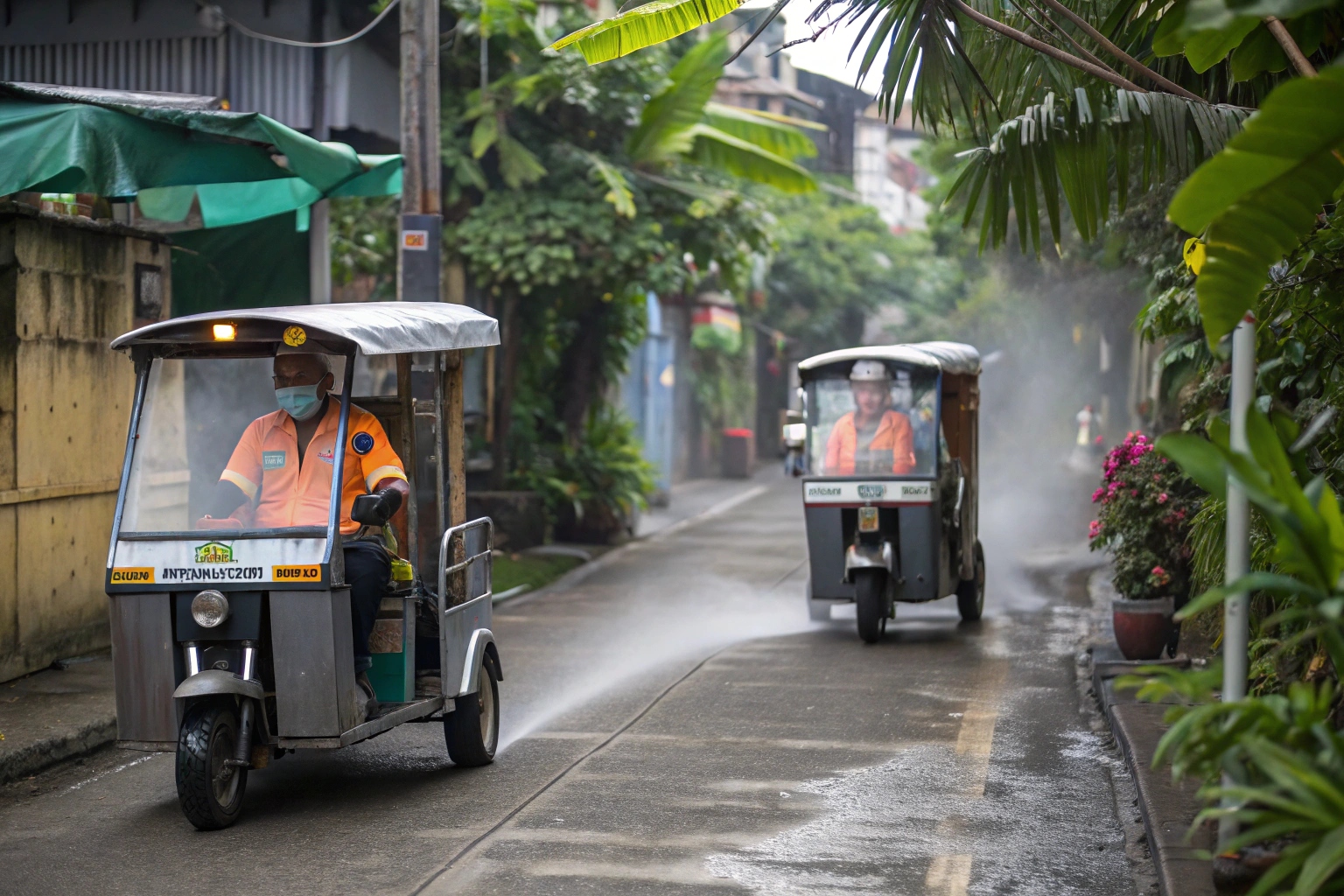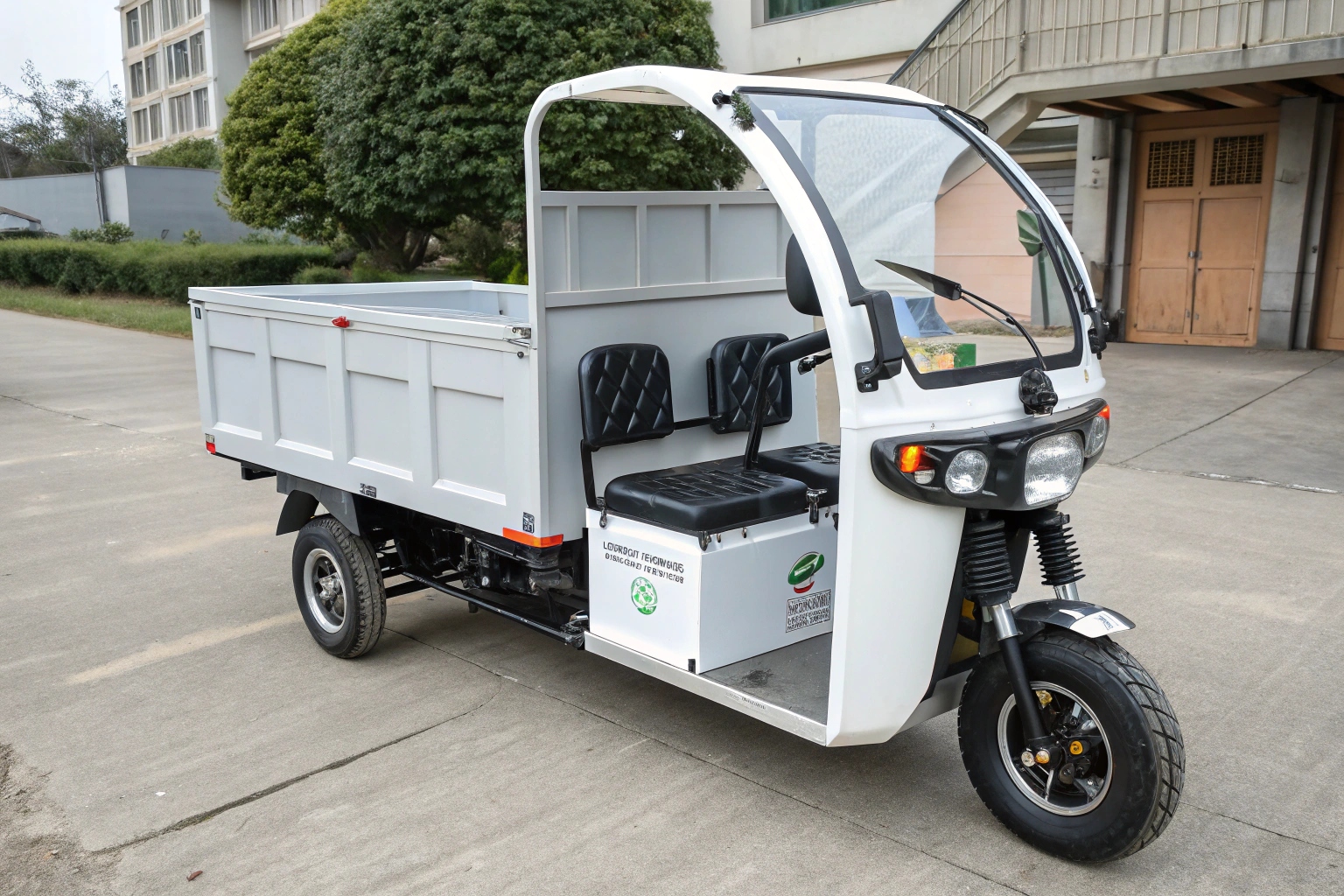Your city's waste collection is slow, expensive, and polluting. Traditional trucks get stuck in traffic and can't reach narrow streets, leaving communities underserved and unhappy.
Electric garbage tricycles are a prime opportunity in Southeast Asia because they efficiently navigate congested cities like Manila and Jakarta. They lower operational costs, align with government green policies, and provide essential waste services in areas inaccessible to large trucks.

From our factory floor, I see a clear trend. More and more inquiries are coming from importers in the Philippines, Indonesia, and Vietnam. They are not just buying vehicles; they are looking for a solution to a very real problem. The crowded urban landscapes and economic realities of Southeast Asia demand a different approach to municipal services. The rise of the electric garbage trike isn’t an accident. It’s a calculated response by forward-thinking city planners, private companies, and local entrepreneurs to build cleaner, more efficient communities from the ground up.
Why are Southeast Asian cities adopting electric garbage trikes?
Waste keeps piling up in narrow backstreets, and rising fuel costs are straining your city's budget. This creates health hazards and financial pressure. Electric trikes are the agile, affordable answer.
Cities in Southeast Asia are adopting electric trikes because they solve three problems at once: they reduce vehicle emissions, cut operational costs, and access the dense urban alleys that traditional garbage trucks simply cannot enter.

A few years ago, a client from Jakarta explained his problem to me. His company had a contract for waste collection, but his large trucks spent more time stuck in traffic than actually working. They also couldn't get into the narrow lanes, or 'gangs,' where thousands of people live. He was losing money and failing to meet his contract goals. This story is common across the region, from the 'sois' of Bangkok to the 'barangays' of Manila. This is the exact problem our Электрлік қоқыс тричос are built to solve.
Navigating Urban Density
Cities like Jakarta and Manila are famous for their traffic congestion. A large vehicle is a liability. Our Электрлік велосипедтер, however, are designed to be nimble. They can weave through traffic and, most importantly, enter narrow residential lanes to collect trash directly from households. This door-to-door service is a massive upgrade in public health and convenience.
Aligning with Green Policies
Governments across the region are pushing for cleaner solutions. For example, the Philippines' Clean Air Act encourages the use of electric vehicles, and Indonesia has national goals to reduce waste. Adopting electric garbage trikes helps municipal leaders meet these targets. It's a visible way to show progress, reduce the city's carbon footprint, and lower noise pollution, making them a popular choice for public projects.
Who is buying electric garbage trikes in Southeast Asia?
You see the potential for electric trikes but aren't sure who to sell them to. Targeting the wrong customer wastes your time and effort, stalling your entry into this growing market.
The key buyers are local government units (LGUs), private waste management contractors, real estate developers, and community-focused NGOs. Each group has different needs, but all are looking for efficient, low-cost sanitation solutions.

In my experience, the market in Southeast Asia is diverse. We don't just sell to one type of customer. Understanding the different buyer profiles is crucial for any importer who wants to succeed. Last month, we prepared a detailed proposal for a public tender in the Philippines, while also shipping a customized fleet to a private resort developer in Thailand.
Local Government Units (LGUs)
These are your biggest potential customers. In the Philippines, for example, there are over 44,000 local 'barangays,' many of which still use pushcarts for waste collection. LGUs are looking to modernize. They need durable, affordable vehicles that are easy to operate. For them, we provide support for public tenders and can offer SKD/CKD (knocked-down kits) for local assembly, which helps create jobs and reduces costs.
Private Contractors and Developers
Private companies that manage waste for industrial parks, gated communities, and new housing developments are another key market. They care deeply about efficiency and brand image. An electric fleet looks modern and environmentally friendly. For these clients, we often customize the vehicles with their company branding and specific features tailored to their operational needs.
NGOs and Donor Projects
Non-governmental organizations, often funded by international donors, run pilot programs to test new solutions. They usually start with smaller orders of 5-10 units. They need a flexible factory partner who can support these small-scale projects and provide data to help them secure funding for larger rollouts.
Why are electric garbage trikes a perfect fit for Southeast Asia's environment?
You worry that a standard vehicle won't survive the region's heavy rains and intense humidity. A wrong choice can lead to rust, electrical failures, and a fleet of useless vehicles.
Electric trikes are perfectly suited for Southeast Asia's climate and urban layout. Their simple mechanics, weather-resistant design, and small turning radius make them far more practical than large, complex trucks in high-traffic, tropical environments.

The climate in Southeast Asia is a real vehicle killer. With cities like Manila and Jakarta receiving over 2,400mm of rain annually, water damage is a constant threat. At our factory, we don't just build a standard trike; we build a trike for this specific environment. We know that if the controller or motor isn't sealed properly, the vehicle won't last one rainy season. It's about building for reality, not just for a catalog picture.
Designed for Local Conditions
The combination of traffic and weather is unique. A vehicle must be both nimble and tough. That's why we focus on two things: maneuverability and durability.
| Белгі | Electric Garbage Trike | Small Garbage Truck |
|---|---|---|
| Typical Turning Radius | ✅ 2.8 meters | ❌ 6-7 meters |
| Vehicle Emissions | ✅ Zero (at point of use) | ❌ Diesel fumes |
| Road Access | ✅ Narrow alleys & side streets | ❌ Main roads only |
| Climate Readiness | ✅ Sealed electronics | ❌ Complex engine vulnerable to water |
This table shows why the trike is the smarter choice. It's not just a smaller truck; it's a fundamentally better tool for the job. Its simple design also means maintenance is straightforward, which is a huge benefit in areas where finding a specialized diesel mechanic is difficult.
What key features should importers prioritize for the Southeast Asian market?
Ordering a generic electric trike from a catalog is a big risk. Without the right specifications, you could end up with a product that rusts, breaks down, and has no local parts support.
Importers must prioritize features that guarantee durability and uptime. This means demanding effective waterproofing, corrosion-resistant materials for the cargo bed, the option for practical lead-acid batteries, and a reliable plan for spare parts.

Every time I work with a new importer from a coastal city like Cebu or Surabaya, the first thing we discuss is rust. Standard painted steel will not survive the salty, humid air. Making the right choices on features before the order is placed is the most important step an importer can take. It defines the long-term success of their business. As a factory, our job is to provide these options and explain why they matter.
Built to Last in the Tropics
You need a vehicle that can withstand daily downpours and constant humidity. Regular paint is not enough.
- Waterproofing: The controller, motor, and all electrical connectors must be sealed and waterproof. This is non-negotiable.
- Коррозияға төзімділік: The frame should have an electrophoresis coating. For the cargo bed, which holds wet garbage, buyers should choose thickened, rust-resistant steel or even a stainless steel option.
A Smart Approach to Power and Parts
Technology is only useful if it's practical.
- Батареяны таңдау: While lithium batteries are advanced, lead-acid batteries are often the better choice for this market. They are cheaper and can be easily replaced by any local battery dealer. In Indonesia, over 80% of similar EVs use lead-acid for this reason.
- Spare Parts: A reliable supplier will help you create a spare parts package with your first order. This should include common items like brake pads, tires, controllers, and throttles to ensure your customers' vehicles are never down for long.
| Белгі | Priority Level | Key Consideration for SEA |
|---|---|---|
| Waterproof Wiring & Контроллер | Must-Have | Essential for daily tropical rainstorms. |
| Stainless Steel Cargo Box | Must-Have | Prevents rust from wet waste and humid air. |
| Lead-Acid Battery Option | Ұсынылған | Ensures easy and affordable local replacement. |
| Local Spare Parts Plan | Must-Have | Guarantees vehicle uptime and customer satisfaction. |
Қорытынды
Electric garbage trikes are a smart investment for Southeast Asia, tackling urban density, environmental targets, and tight budgets. Choosing the right features and a supportive factory partner is essential for success.

